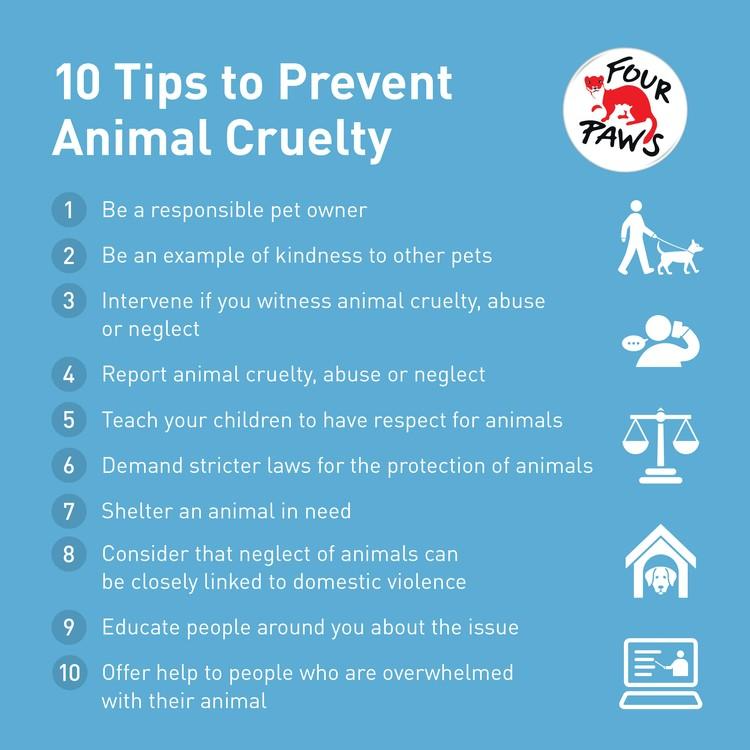Australia and New Zealand boast stunning landscapes and rich biodiversity, encompassing a plethora of species that evoke awe and admiration. However, amidst this idyllic setting lies a grim reality: the insidious presence of animal cruelty. Whether in rural expanses or urban neighborhoods, the challenge of preventing animal cruelty requires a unified and robust response. So, what actionable steps can we take to stop this abhorrent practice in Australia and New Zealand? The answer may lie in grappling with a pivotal question: How can we foster a culture of compassion that transcends mere awareness?
To begin with, an understanding of the specific forms of animal cruelty prevalent in these regions is essential. In Australia, issues such as dog fighting, unlawful hunting, and neglect in farms are rampant. The rural landscape can often hide the grim realities where animals are used merely as commodities. In stark contrast, urban settings may witness a rise in pet abandonment and hoarding situations. Meanwhile, New Zealand grapples with similar issues, alongside the unique challenge of protecting native species from invasive predators. From feral cats to stoats, the environment necessitates a delicate balance between ecological sustainability and animal welfare.
One of the most pivotal steps toward curbing animal cruelty lies in education and community awareness. Empathy must be cultivated from a young age, inspiring the next generation to cherish all living beings. Schools can integrate comprehensive animal welfare education into their curricula. Engaging students through workshops, discussions, and interactive activities not only raises awareness but also instills a sense of responsibility that translates into action. This educational approach challenges communities to rethink their relationships with animals, fostering empathy rather than ignorance.
In tandem with education, fostering strong legislative frameworks is paramount. Both Australia and New Zealand possess laws aimed at protecting animals, yet enforcement is often lax. Activism should pivot towards advocating for stricter penalties for offenders and the establishment of a dedicated governmental body that addresses animal welfare issues comprehensively. The challenge here lies in mobilizing public support—the communal voices of concerned citizens can amplify the urgency of these issues. Petitioning for policy changes or participating in local government meetings accentuates the necessity of a consolidated approach to guarantee legal protections for vulnerable animals.
Moreover, collaboration between various stakeholders—including government entities, non-profit organizations, and local communities—can lead to unparalleled progress. Organizations dedicated to animal welfare play an instrumental role, but they cannot function in isolation. By engaging local businesses, community leaders, and educational institutions, a multi-faceted coalition can fortify efforts to combat cruelty. For instance, sponsorship of local events such as ‘Adopt Don’t Shop’ days can promote the adoption of pets from shelters while simultaneously raising much-needed funds for advocacy groups. In turn, these collaborations can culminate in shared initiatives that bolster awareness and drive community involvement.
But what about the power of social media in this digital age? Platforms like Instagram, Twitter, and Facebook have the potential to be catalysts for change. Harnessing these tools to spotlight animal welfare campaigns can engender widespread participation, potentially leading to viral movements that capture hearts and minds. Challenging individuals to share their stories about animal rescue, rehabilitation, or companionship bolsters a narrative of compassion. However, this also presents a challenge: how to convey the gravity of animal cruelty with the same emotional resonance that drives engagement in other social issues. Striking this balance is critical in ensuring that the urgency of the matter does not get overshadowed by sensationalized content.
Furthermore, volunteering at local animal shelters or welfare organizations presents another avenue for meaningful action. Many people are unaware of the dismal conditions animals face within these facilities. By actively participating, they can witness firsthand the need for change and the importance of their contributions. Volunteering fosters a personal connection—transformative narratives about rehabilitation and resilience emerge, igniting a passionate commitment to advocacy. Yet, the challenge remains: inspiring long-term involvement rather than transient participation. Establishing mentorship programs within these organizations could cultivate a dedicated volunteer base, transitioning casual helpers into steadfast advocates.
In addition to grassroots efforts, the role of the broader economy in addressing animal cruelty cannot be overlooked. Consumer choices wield immense power. Advocating for cruelty-free products, supporting ethical farming practices, and promoting local artisans who prioritize animal welfare presents a grassroots approach to economic change. This creates an economic environment where businesses that prioritize humane treatment of animals thrive, thus reducing cruelty at its roots. The challenge here is to transcend mere consumerism and encourage every individual to act as an informed citizen who supports interconnected ethical practices.
In conclusion, stopping animal cruelty in Australia and New Zealand necessitates a multifaceted strategy that embraces education, legislative reform, community collaboration, and conscientious consumerism. The question remains: are we prepared to embrace this challenge collectively and redefine our interactions with animals as compassionate caretakers rather than indifferent bystanders? Through sustained effort, empathy, and advocacy, it is possible to build a future where all animals are treated with the dignity they deserve, creating a harmonious coexistence in these vibrant regions. The time to act is now.








